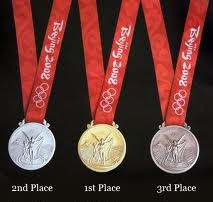ANALYSIS: Obamacare Explained – Part 2 – the Hawaii Connection
There’s no sugarcoating it. The October rollout of Obamacare’s go-to web portal for health insurance needs, “healthcare.gov” was an HTML-based disaster in public relations.
So much so that by comparison, the problems with Hawai`i’s own web-based insurance exchange, the “Hawai`i Health Connector” seem to be getting repaired at break-nerd speed.
Not that it’s a perfect experience. Errors abound, in both code and good old-fashioned grammar, as one of the messages frequently encountered on the site demonstrates:
“Mahalo for your patient during this time.”
The site can also be a tad redundant, with a seemingly endless series of pictures of dismembered hands flashing a “thumps up” signal, and head-scratching tips like “all applicants are encouraged to prepare in advance of preparing their application ….”
Awkwardly-worded, sure. But mock it all we like, the most important point to be made is that the site is active, and for the most part, functional.
If you’re an individual currently without health insurance, you absolutely should be using it. Soon. Tax penalties for the uninsured will start kicking in on April 1, 2014.
Editor’s note: Part 1 of our series explains the penalties for non-compliance.
Choosing a plan through the health exchange also happens to be the only way for you to receive federal subsidies meant to offset the cost of health insurance.
Before we explain how the Health Connector itself functions, let’s take a look at who qualifies for federal assistance under Obamacare, and who doesn’t.
It’s All About Income
Though the administration has never described it as such, there are really three distinct income brackets recognized by Obamacare, and the system treats each bracket very differently. In short, the more you earn, the less help from Uncle Sam you can expect.
Bracket 1: The Medicaid-Eligible
One of Obamacare’s key provisions has been a dramatic expansion of Medicaid. Now, anyone with income levels up to 138% of the federal poverty line could possibly qualify.
To see how that works, let’s start at the very bottom income level, and by that we mean everyone from those earning zero income to individuals earning up to around $18,257 per year.
Any individual in Hawai`i with yearly income falling somewhere between those two numbers may be eligible for Medicaid health coverage, and the Hawai`i Health Connector is designed to point them in that direction.
Medicaid eligibility also extends to families with anywhere from zero income to $37,384 for a household of four family members. To calculate family eligibility limits, count yourself as an individual ($18,257) and add $6,376 for each additional family member in your household, up to a total of eight people including yourself. If you have more than eight in your household, add an additional $4,620 per family member.
Of course, the Health Connector is designed to help you figure out which bracket you fall into. More on that in a minute.
Bracket 2: Subsidized Insurance Coverage
Obamacare provides subsidies to offset insurance costs for people with family incomes between 100% and 400% of the federal poverty level.
In Hawai`i, this means if you’re an individual with an income somewhere between $18,257 and $52,920 per year, you may qualify for some sort of financial subsidy to assist with your health insurance costs.
To calculate family income limits, count yourself as an individual ($52,920) then add an additional $18,480 per family member. A family of four, for instance is eligible for assistance up to an income level of $108,360 yearly.
Subsidies for these income brackets are being calculated based on a “sliding scale.” Meaning simply, the more you make, the less help you should expect.
When the Health Connector determines you are eligible for a subsidy (given as a tax credit), the subsidy will be paid directly to the health insurer. The benefit to you will be a lower health insurance bill than you otherwise would have faced.
(Reportedly, you may choose to pay the full cost of health coverage and opt to receive the subsidy as a year-end tax credit.)
So just how much help can you expect?

Obamacare subsidies slowly decrease as your income approaches eligibility limits. Image courtesy University of Utah.
Obamacare is designed to cap entry-level health insurance premiums (to be exact, the second-lowest “silver” level plan on the Health Connector) at anywhere from 2% of income for families hovering at the federal poverty line, to 9.5% of income for families at up to 400% above the poverty line.
To help figure out what you or your family may be entitled to, we highly recommend using the Kaiser Foundation’s easy-to-use subsidy calculator, though you won’t actually know the exact help you will be getting until you fill out a formal application at the Hawaii Health Connector website.
Bracket 3: You’re on Your Own
Folks with incomes above the aforementioned limits can expect to pay full freight, so to speak, for their insurance coverage. On the plus side, filling out an application via the Hawai’i Health Connector will still allow them to view competing health plans.
Obamacare is intended to slow the growth in health care costs over the long haul, theoretically helping to lower expenses even for people not eligible for subsidies, but how that works out remains to be seen.
Is This the Insurance Olympics?
Sort of.
The Hawai`i Health Connector breaks insurance plans down into four categories: Bronze, Silver, Gold, and Platinum plans.
Not surprisingly, the more costly the plan, the better coverage it offers. Costs will vary depending on your age and the size of your family (and whether you qualify for subsidies).
An important warning: although insurance companies cannot discriminate based on pre-existing conditions, tobacco users can expect to pay up to 50% more for all plans. That’s written into the law.
Using one of our writers as a guinea pig, we found that a 35-year-old single male (non-smoker) with no children, who doesn’t qualify for subsidies, could expect to pay anywhere from $132 per month for “Bronze” coverage to $355.89 for a “Platinum” plan.
The cheaper plans are “HMO”-style plans, with limited choice of physicians, while the most expensive plans give buyers the ability to choose their health providers.
Bronze plans typically pay up to 60% of health care expenses incurred in a given year, with individuals protected against out-of-pocket expenses in excess of $5,000.
Silver plans pay up to around 70% of costs, while gold and platinum plans pay around 80% and 90% of health care expenses in a given year, respectively.
Out-of-pocket expenses were capped at $2,000 for the platinum plan we evaluated, while the gold and silver plans capped yearly expenses at $4,000 and $5,000, respectively.
Deductibles and co-payments varied immensely (from several-thousand-dollar deductibles to a few hundred or less), so we highly encourage you to fill out an application on the Health Connector, and to read each plan you’re interested in very thoroughly to fully understand the level of protection you can expect.
Hawai’i Health Connector Survival Guide
Apart from using the handy subsidy calculator from Kaiser, the best thing you can do for yourself to understand your insurance options is to go ahead and plunge into the Health Connector’s application tool here.

No need to go there. Just be patient, and you’ll make your way through the Hawaii Health Connector. Image courtesy Plaza College.
Getting through the site requires patience, so plan on doing this when you’re in a relaxed mood. Ten minutes of swearing at your monitor apparently doesn’t work. We tried that.
Anyhow, once you’ve created an account, you’ll begin filling in necessary info (social security, age, number of dependents, etc).
A helpful tip: If you get kicked out of the system at some point (like our guinea pig did), just head straight back to the application page to sign in, then hit the “my account” button. Maddeningly, the home page of the Health Connector doesn’t have a sign-in function.
Once you’ve finished your application, you’re ready to pick a plan and see your potential subsidy. Mind you, don’t expect an “application complete” message here. Instead, once you see a new screen appear with the “my eligibility” button, go ahead and click on that, then click on “select a plan.”
Intuitive? Nope. But take a deep breath, as you’re well on your way.
As we mentioned, read through those plans very carefully, then pick the one that best suits your needs.
Best wishes, and should you find yourself needing assistance, best to contact the professionals. The Hawai`i Health Connector support team can be reached at (877) 628-5076.
Spanish speakers may need additional assistance though. This may be the only telephone tree on Earth offering “Hawaiian” as the alternate language option.
Pomaika`i.
Sponsored Content
Comments











